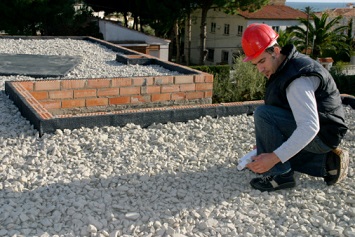A roof is an easy thing to take for granted, at least while it’s functioning as intended. However, winter, especially in the northern climes, too often reminds us of the importance of roof maintenance. Rather than waiting for the signs of serious roof damage to appear, your best bet is to be proactive and address any potential issues before the cold weather sets in.
The first step should be to conduct a roof inspection, especially if it’s been a while since your last one. If you are not set up to perform and in-house inspection, now is the time to act. Typically, roofing specialists get have longer lead times as winter approaches, as many facility managers have similar concerns.
Whether you contract out or conduct the inspection yourself, be sure to check for less obvious signs of existing damage that could lead to larger issues once the snow starts. One big red flag is standing water on a flat or low-slope roof. In addition to showing up in areas where there is already critical damage, water tends to accumulate in areas where organic material has collected, as it has the potential to act like a dam. An inspection is a good time to clean up any debris (organic or otherwise) before it leads to a larger issue.
While you’re up there, be sure to keep an eye out for any animal damage. Birds tend to congregate in areas where water collects. They will also take advantage of HVAC or other rooftop systems as spaces to nest.
According to Adam Herring, a senior project manager with Highland Commercial Roofing, drainage points and any area with a penetration are the most common trouble spots. As are the perimeter where the roof and exterior wall meet, and any high traffic areas.
Also, if cleaning is also part of your inspection process, make sure that you use a method that is appropriate for your roofing material. For example, power washing could end up causing more damage to the roof than the debris you were cleaning off. Herring recommends cleaning with a leaf blower or a soft bristled broom to avoid creating additional problems.
Lastly, no matter how much planning you do, at some point down the line something will go wrong. Be sure to keep a vendor on file who will be able to respond to any roof repair emergencies. Some roofing vendors also offer emergency repair training, which is another proactive option to address any emergencies while waiting for a repair team.

